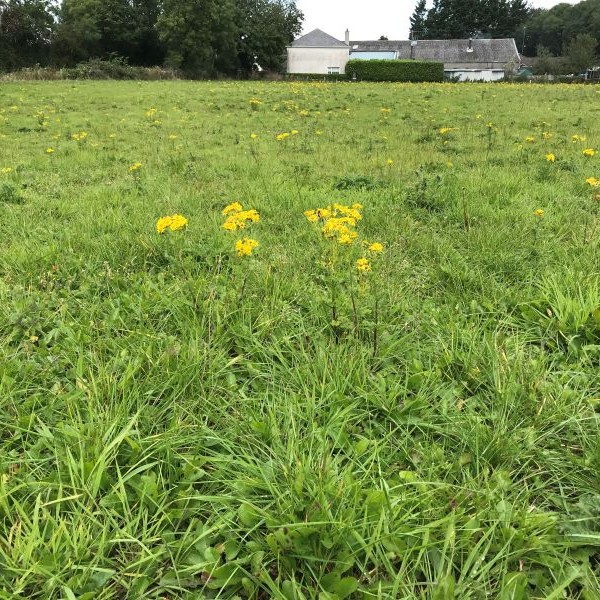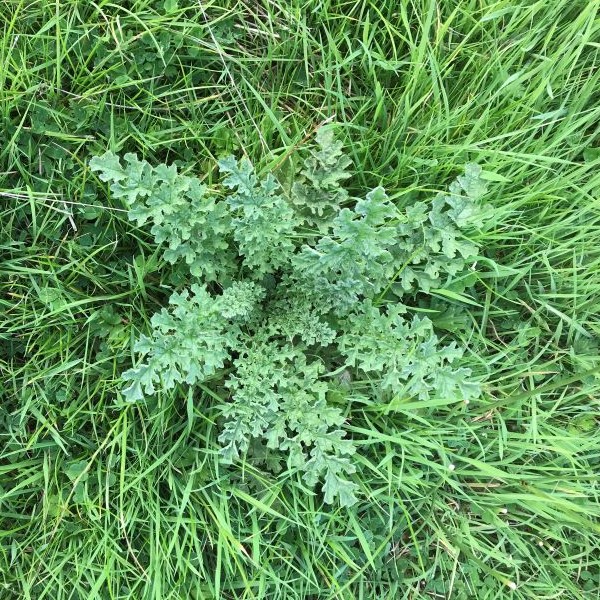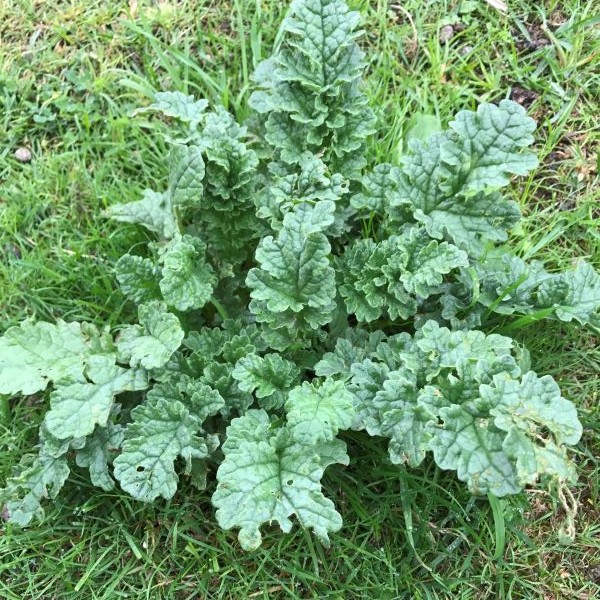Ragwort poses a serious threat to livestock health. Left unchecked, it can quickly spread and reduce available grazing.
Ragwort

What is ragwort?
Ragwort is an invasive weed that spreads its seeds through wind dispersal. Although ragwort isn’t considered an issue in gardens and other outdoor areas, in pastures and other agricultural land it is poisonous for horses and cattle when consumed.

Biology
Ragwort is a biennial broad-leaved weed.
Commonly found on waysides, grazing land and uncultivated pastures.
Ragwort is a hardy weed, damage to the crown through cutting, poaching or machinery will force its growth habit to change and the plant will continue to flower every year.
Seeds can remain viable in the ground for up to 15 years, which is why regular treatment is needed.
Most commonly appears in late spring to autumn, summer is the best time to treat.
How can I identify ragwort?
 Fully formed ragwort
Fully formed ragwort
 Rosette stage
Rosette stage
 Closer look at leaves
Closer look at leaves
Ragwort is a tall plant, sometimes growing up to one metre in height. It has large, flat clusters of bright yellow flowers, similar in appearance to daisies; appearing from July to October.
When not flowering the plant will remain in what is known as the ‘rosette stage’, where it takes on a dark green colour with curly-edged leaves.
This happens during the first year of growth, and the plant will grow up to almost one metre tall in its second year.
Once it begins to flower the seeds are borne singly with a downy appendage which makes them readily dispersible. This is what makes them so difficult to manage, as, although they are most common in pastures which are of poor quality, they can also appear in a range of different grassland habitats.
Why is ragwort a problem?
Ragwort is toxic for grazing livestock, such as cows and sheep (it is also capable of harming pigs, chickens, and dogs) but it can be fatal to horses in particular, causing irreversible liver damage.
Dried ragwort is also a danger in hay. When it is unknowingly collected in silage, it can spread poisonous alkaloids throughout the silage pit. This is especially dangerous when fed to livestock since the unpleasant taste is no longer present, and becomes more palatable.
Ragwort is noted under the Noxious Weed Act of 1959, which means that a landowner may be served with a notice to destroy the weeds if the plant is present near or on grazing land. Failure to comply can result in prosecution or a penalty can be imposed on your single farm payment under the cross-compliance conditions.
How do I control ragwort?
Eliminating ragwort can often take several years, as the seeds can remain viable within the soil for years. The most important thing is to identify the problem early, to prevent the spread.
The best time to get on top of the problem is when the plant is in the rosette stage (200mm across or high), before the plants are developing. This will become far more difficult if the plant has grown to the flowering stage and the seeds are beginning to disperse.
Although digging up the plant and carefully disposing of it does prevent the initial seed spread, the roots may remain and grow again the next year.
We wouldn’t recommend trimming or cutting the plant either, as this will increase the persistence of the plant’s growth.
Forefront T Herbicide
Forefront® T is the best herbicide treatment for long-term control of ragwort in grassland. It must only be used on grazing ground grazed by cattle or sheep (not for any other livestock).
Seek advice before use, for more information download our FREE Forage App.
Available to download from the App Store or Google Play now.
FAQs
What herbicide kills ragwort?
Forefront T offers the best solution available for controlling broad-leaved weeds, such as ragwort. Forefront T works to remove the roots of the weeds to ensure longer-term control to tackle the weed’s robust and fast-growing nature.
Ideal for use in grassland pastures grazed by cattle and sheep, since Forefront T doesn’t hold back grass growth.
When is the best time to treat ragwort?
The best time to remove ragwort is when it is in the rosette or seedling stage, by pulling the entire root system from the wet ground, if possible, to ensure all of the root is collected.
Widespread infestation must be tackled with chemical treatment, such as Forefront T, which should be sprayed or wiped onto the plant. However, any animals must remain away from the area until the dead plant is removed, as they can still be poisonous.
How do I spray ragwort?
When spraying ragwort, it’s recommended that you wear appropriate gloves, goggles and face masks since ragwort can be harmful for humans as well as animals.
All animals should remain clear of the area for the recommended amount of time, which we can advise you on based on the level of infestation. All traces of the weed should be removed before bringing the animals back to the pasture, this is because the dead or dying remains of the weed still remains incredibly harmful.